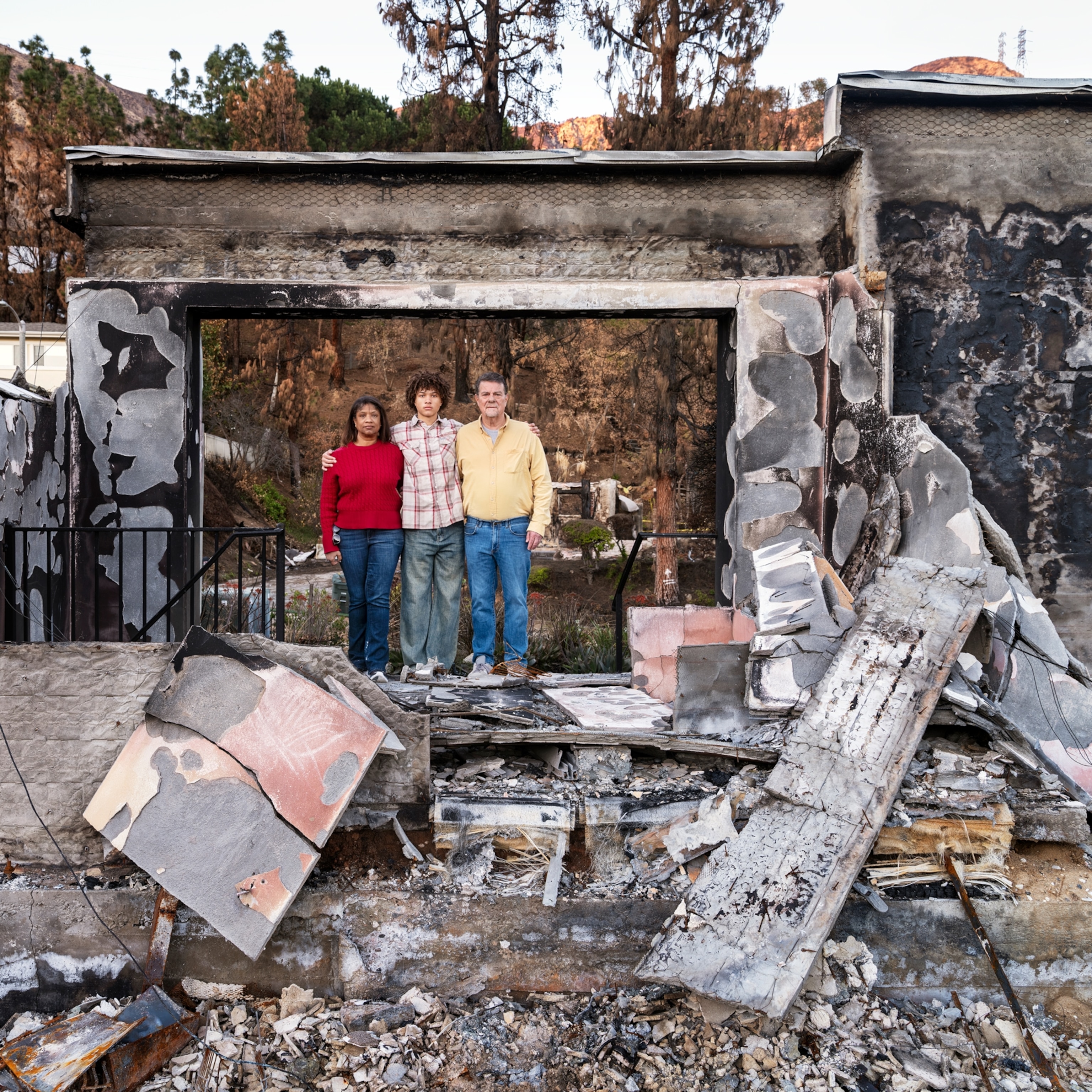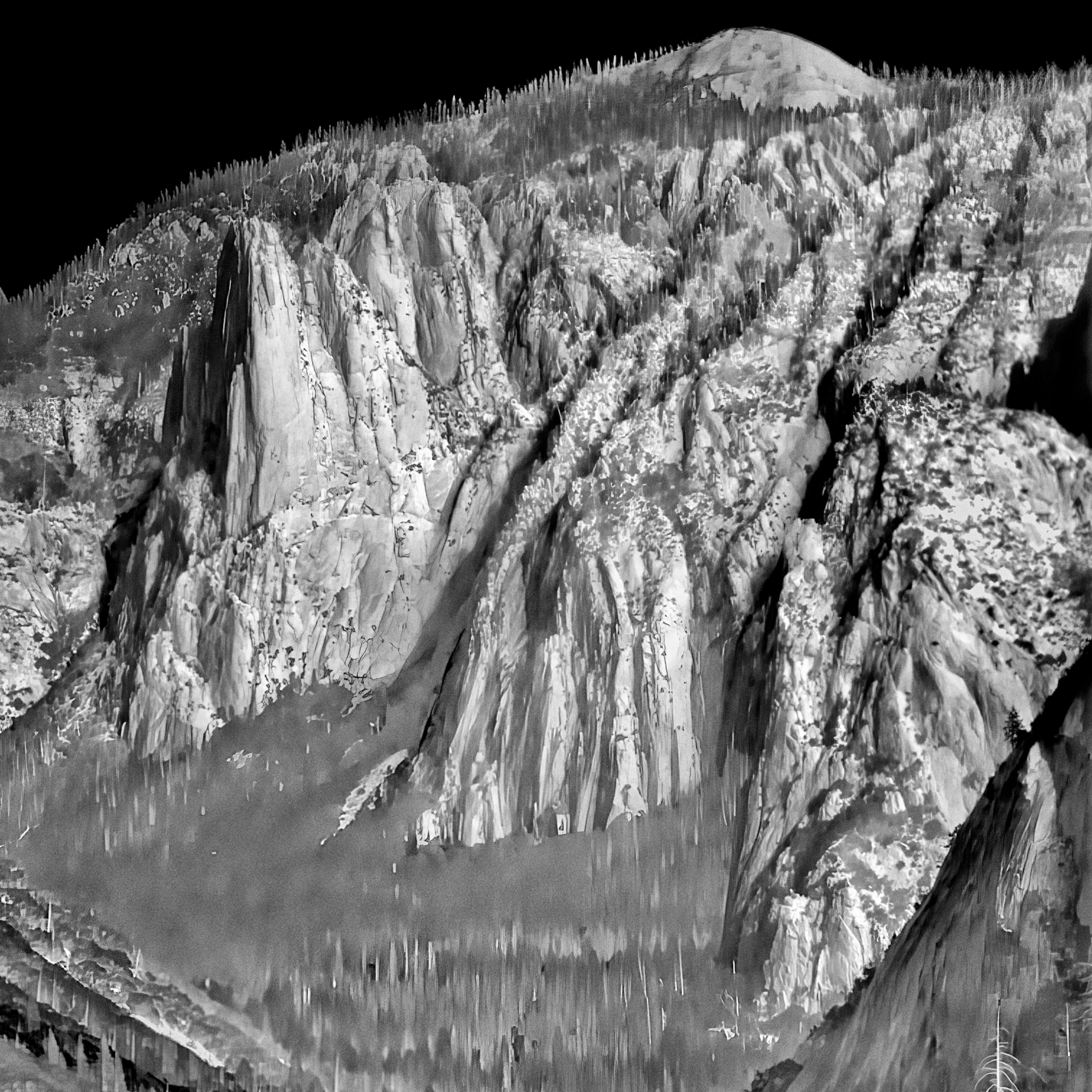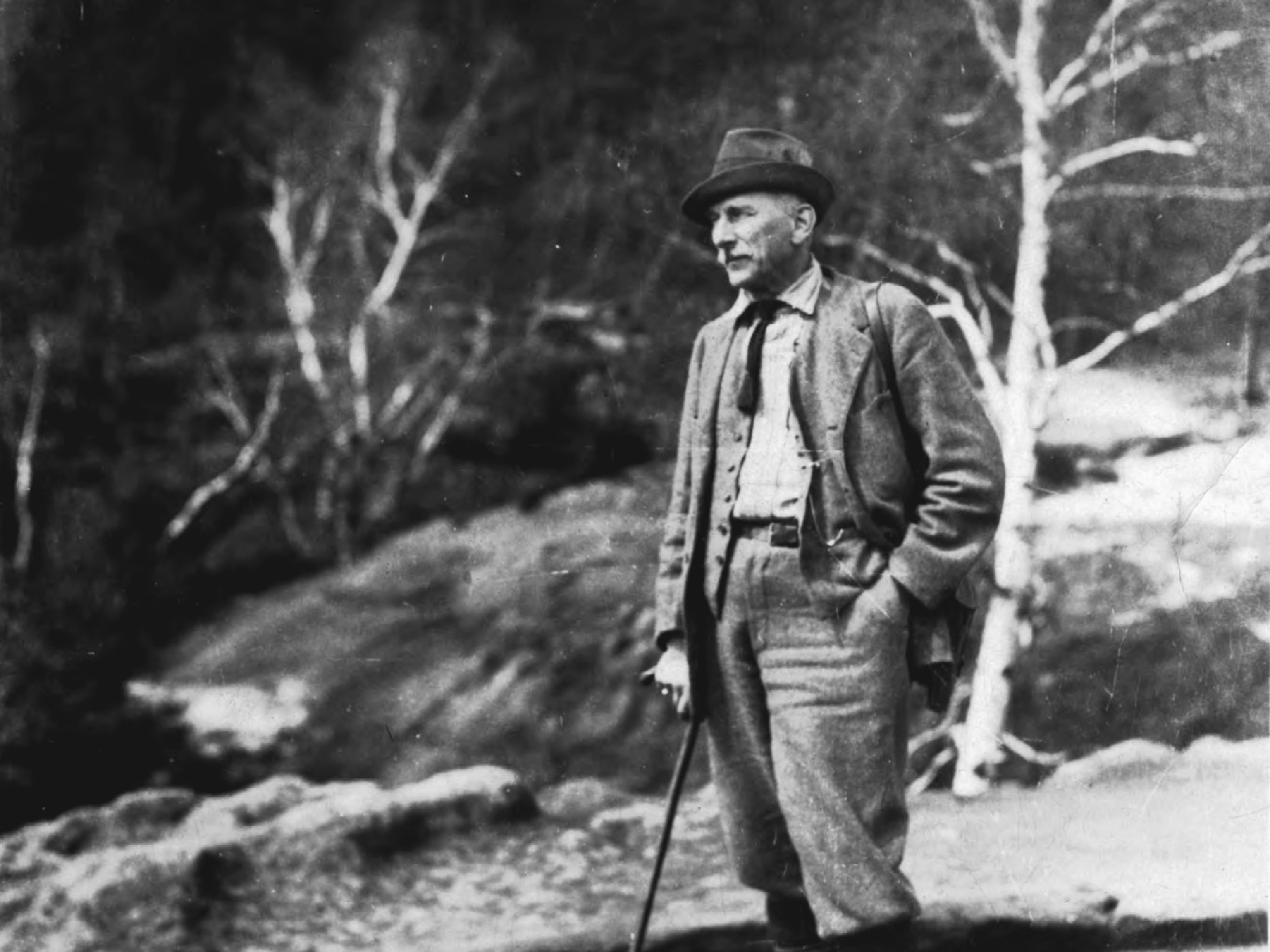California’s sequoias and redwoods can survive climate change—if we help them
The worst fire season yet pushed the iconic trees to their limits. "There’s a future for these trees,” an expert says. But it will require dealing with 100 plus years of fire and climate mismanagement.
On a rolling granite hill in the Sierra Nevada Mountains, on a hot August night, tree scientist Kristen Shive camped beneath a giant sequoia tree she estimated could be a thousand years old.
Her employer, the nonprofit Save the Redwoods League, had just bought the property on which the tree stood, a 530-acre forest outside Sequoia National Park packed with ancient trees. Plans for how to preserve them spun through her head as she stared up at the stars through the tree’s frilly foliage.
A few months later, in October, she stood ankle-deep in ash at the foot of that same tree. But this time, the foliage overhead was charred to a crisp.
This giant sequoia—and likely hundreds of others—had fallen victim to an intense fire that swept over 174,000 acres of the western Sierra.
It was just one of more than 9,000 fires that scorched more than four million acres of California in 2020, a horrifying and record-breaking year. Fires burned through homes and oak forests, grasslands and pines—and also through huge patches of giant sequoias and their close cousins, the coast redwoods, respectively the most massive and the tallest trees on Earth.
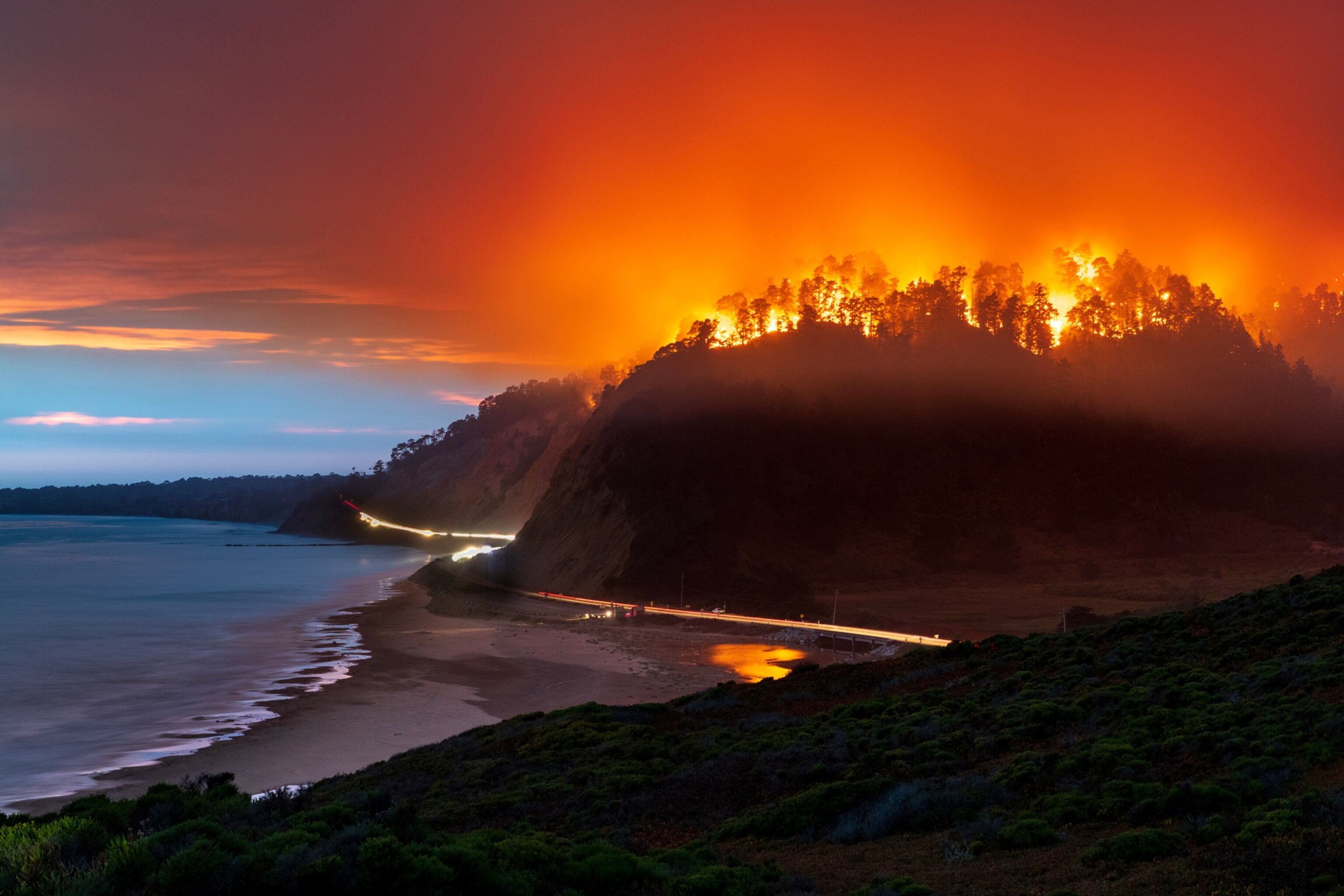
Both have survived hundreds of millions of years. Now, though, they are being pushed to new extremes by human-caused climate change and by over a century of forest mismanagement that has left them ripe for destruction. The fires of 2020 raise the disturbing question of what it will take to protect these ancient and iconic trees in a climate-changed future where fires they can’t survive become the norm.
It’s up to us now, said Shive, Save the Redwoods League director of science. “It’s not all doom and gloom, though these trees are literally irreplaceable,” she said. “If we get our act together, starting now” —limiting climate change, managing forests for fire—"there’s a future for these trees.”
Fire in sequoia country
In the western Sierras, home to the last 73 groves of giant sequoias, fire used to be normal and ubiquitous. In fact, it’s a necessity for sequoias: They need low-intensity burning to crack open their knobby, seed-filled cones and to clear out space on the forest floor for their seedlings to grow.
So when a lightning storm kicked off small fires near Sequoia and Kings Canyon National Parks in late August, “I wasn’t losing sleep over it,” said Christy Brigham, the parks’ chief resource manager.
But in mid-September, high winds merged the scattered fires into a monster. One Wednesday night, it shot forward by an unbelievable 12 miles.
It burned from the forest floor to the treetops. Sequoias in a crowded forest like this one are shaped like dish brushes: straight, mostly branch-free trunks topped with a shaggy crown hundreds of feet up. For a fire to reach that high, it must be burning extremely intensely.
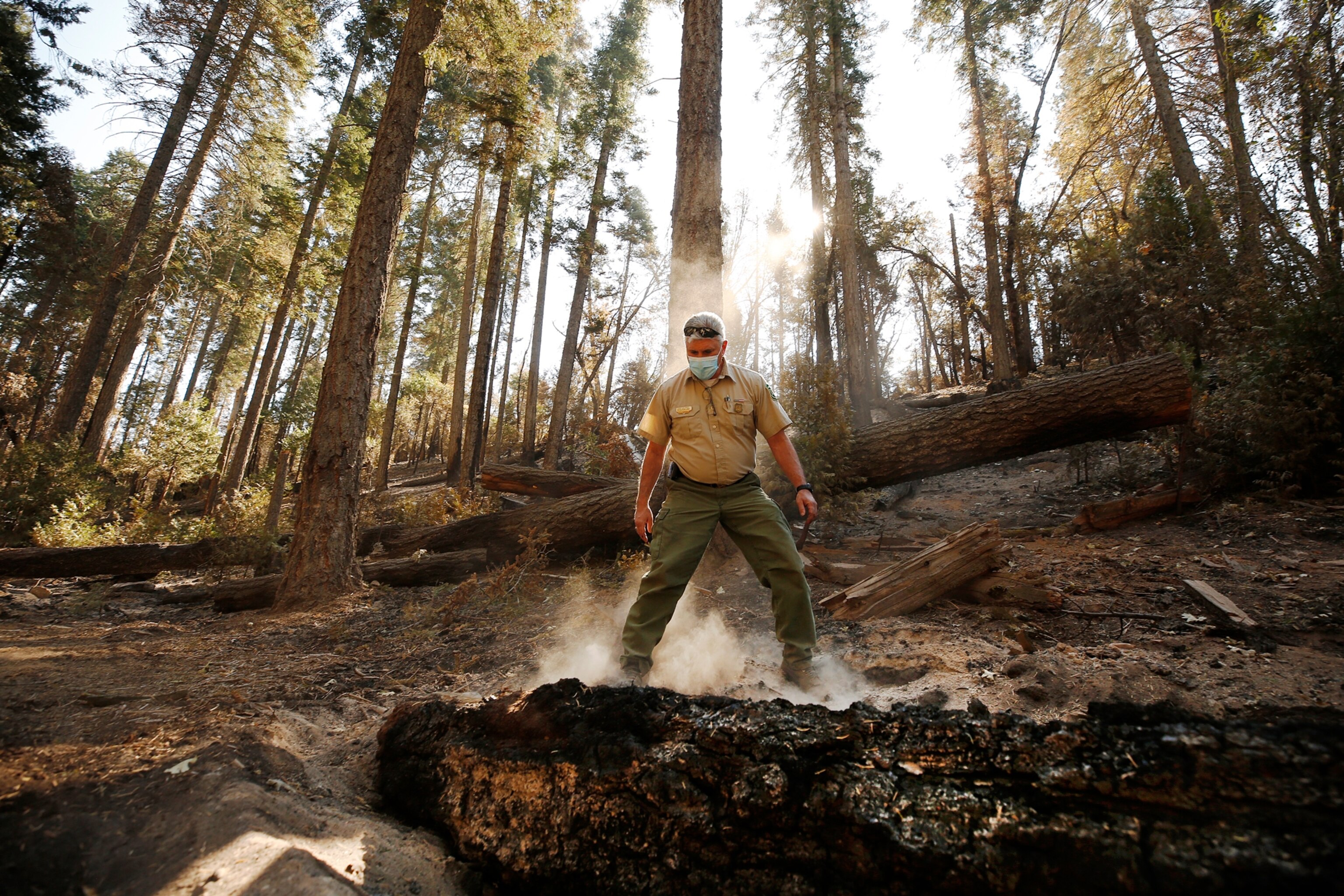
When Nate Stephenson, an ecologist who has studied giant sequoias for over 30 years and who lives about 30 miles outside the park, looked out his window shortly after the fire intensified, he almost didn’t believe his eyes. “I saw these little ashes falling down from the sky, these perfect little carbonized pieces of giant sequoia,” he said. Ash from shorter trees, he might expect; that would indicate the fire was burning through the lower part of the forest. But sequoia fragments told him the fire was burning up in the crown, possibly hundreds of feet in the air, where it could do serious damage.
He’d never seen anything like that before.
The fire in redwood country
In late August, a few hundred miles away in the homeland of the coast redwood, another set of scientists were having the same reaction: disbelief and the unsettling feeling that these fires were something new.
One night at the end of a record-breaking heat wave, Joanne Kerbavaz, an environmental scientist for California State Parks, jerked awake to a lightning storm that hurled 11,000 bolts onto the Bay Area, sparking small fires all across the region.
Within just a few days, those small fires had spread. Forty thousand acres were burning in the Santa Cruz Mountains, which are jam-packed with redwoods. The last major fire in the region, in 1948, had burned less than 16,000 acres—and this one was still growing.
“This was something none of us had ever experienced,” Kerbavez said.
She feared first for the all the people she knew who lived in the fire’s path. Then, she feared for the thousands of acres of coast redwood trees, some of which had been growing for 2,000 years.
Creatures of deep time
Coast redwoods and giant sequoias have endured for 200 million years, as continents drifted, the climate swung from hothouse to ice age, and early humans came on the scene. The tallest coast redwood—the tallest tree in the world—reaches 379.1 feet, taller than a football field is long. The biggest giant sequoia ever found is the size of 50 shipping containers, or about 10 blue whales. The oldest surviving sequoia sprouted more than 3,000 years ago.
“One of the things people get out of these trees is a sense of timelessness,” said Stephenson. “They’re unchanging in a world that is changing all around us.”
In the best possible way, he said, “they make me feel unimportant.”
Within the last 10 or so million years, the trees sought out the best niches for themselves in the U.S. West: cool, coastal strips for the redwoods, where their tall crowns poked into the moist fog; steep mountainsides for giant sequoias, where about half their water came from snow falling in the peaks above.

Before European and American settlers arrived, coast redwood forests covered more than 2 million acres. Aggressive 19th and 20th century logging campaigns felled millions of ancient trees, leaving behind only about 5 percent, or roughly 100,000 acres, of the old-growth forest in a narrow strip that stretches some 450 miles from Big Sur to southern Oregon, mostly within a few miles of the coast. Foresters replanted redwoods on about 1.5 million acres, often placing seedlings unnaturally close together to maximize potential profits.
Giant sequoias live in an even tinier range, in scattered patches along a strip about 250 miles long and 15 miles wide on the rocky slopes of the western Sierras. Scientists estimate there are no more than 100,000 of them left, and probably only about 500 of the oldest, most remarkable trees, measuring more than 20 feet across.
Both species are adept at handling fire, with bark up to two feet thick and the ability to regrow even if more than 90 percent of their foliage scorches—coast redwoods can handle even more. But neither species loves the super-hot fires that have become more commonplace in recent years because of human choices.
Triage and tears
As the sequoia-zone fire spun up, Brigham’s anxiety level shot to “high.” Suddenly, the area at risk included all the giant sequoia groves in the parks, the surrounding national forest, and on private land nearby: Thousands of sequoias, many of them over a thousand years old, were in danger.
She spent the morning trying to protect her house, raking up leaves and restacking wood piles farther away, before rushing inside to join a bleak three-hour-long Zoom with other forest managers, including Shive. It was time to make a triage plan: choosing which groves were most vulnerable, where they’d send the limited helicopter and fire teams available. Managers turned on sprinklers ringing the base of the oldest, biggest trees in the parks and tried to steel themselves to the possibility of mass sequoia death.

The next few weeks were a blur. At one point, when a fire helicopter pilot called in a report that one old grove had burned to a crisp, Brigham burst into tears. (Later, someone hiked in and found out the grove was okay; she cried again, from relief).
In the redwoods, the biggest trees were also protected by sprinklers and firefighters, but the suddenness and intensity of the fires meant that not everything could be saved. Kerbavaz called in to meeting after meeting cataloging losses: neighbors’ homes, the beloved visitors’ center at Big Basin State Park, patches of forest. “It was kind of numbing, really,” she said.
Native people managed the forest with fire
The size, intensity, and destructiveness of California’s fires have long been shaped by human choices, said Lenya Quinn-Davidson, a fire expert with the University of California Cooperative Extension.
In the thousands of years before settlers arrived in California, those choices were different. Native people burned local landscapes, including redwood and giant sequoia forests, frequently and extensively, and for many reasons: to reduce wildfire danger to themselves, to clear the forest floor for easier travel, to encourage the growth of plants they used for food or basket weaving or that attracted game.
Around 12 million acres might have been burned each year across the state, three times as much area as burned this year. In the redwood and sequoia zones, fire—natural or intentional—swept through every five to 15 or so years.
The outcome was a patchwork of carefully managed habitats, said Val Lopez, chairman of the Amah Mutson tribal band. “The forest you see now is not what it once was,” he said. “Our people used to keep [it] open.”
But when white settlers arrived, they killed or displaced millions of Native people and forbade those left from practicing their land management traditions. Entire hillsides were logged or cleared for ranching. The forests that remained morphed into new shapes: Without fire to clear the undergrowth, the understory thickened. Young trees and shrubs encroached on historically fire-cleared meadows. Foresters replanted at staggering density.
“Now,” said Lopez, “the forests—they’re clogged.”
Settlers feared fire and designed policies to prevent burns. The “10 AM policy,” for example, created in the early 1900s by the nascent U.S. Forest Service, dictated that any reported burns should be out by that time the next day.
The Forest Service has long since abandoned that policy and started using prescribed burns itself, but at a scale and rate far below historical rates, or what experts think is needed to ameliorate the decades, if not centuries, that fires weren't set. And post-settlement management—from fire suppression to forestry— has reshaped California’s forests, including redwood and sequoia groves. They’re younger, denser, and more full of fuel than when the settlers arrived, so the fires that occur are often bigger and more intense.
Now climate change is stressing the trees and adding to the destruction. Since the Gold Rush in the mid-1800s, temperatures in the western U.S. have increased by 1.6 degrees Fahrenheit.
Fog banks are fading in redwood territory, and snows are less consistent in the Sierras. The changes leave redwoods and sequoias parched.
At the same time, a climate-heated atmosphere gets significantly thirstier with each extra degree of heat, more effectively drying out plants and soil and increasing fire risk. Since 1984, climate change has doubled the U.S.’s burned area, one study found.
Most sequoias and redwoods survived the drought that lasted from 2012 to 2016—a drought of an intensity “completely without precedent”—that can be attributed to climate change. But it probably made them more vulnerable to other threats, like this year’s fires, Stephenson’s observations suggest. It also killed an estimated 150 million trees across the state, which are now a giant kindling source, and which almost certainly exacerbated this year’s burns.
The monarchs fall
In the sequoia grove last October, Shive looked around at the dead monarchs, as trees with diameters over six feet are called, and counted on her fingers until she hit her second pinky,nthen had to keep going: “eleven, twelve, thirteen.”
There wasn’t a green crown to be seen. Just grey ash, grey granite, blackened fallen logs. The dead trees, Shive said as she squinted up, didn’t just scorch: their whole tops burned, beyond the 90 percent mark the trees can usually survive.
In the end, after weeks aflame, the fire burned through about 16,000 acres of sequoia groves, about a third of their total area. Almost 40 percent of that burn was the kind that can kill them. No fire in recorded history comes close in terms of damage to the trees: The 2015 Rough Fire, the biggest in recent history, burned only about 1,000 acres of sequoia groves at high intensity.
So far, Shive and her colleagues have estimated that at least 80 monarchs died just within the 530-acre Alder Creek property. Overall, experts estimate that several hundred giant sequoias probably perished, and maybe over a thousand—roughly one or 2 percent of the total left. That’s obviously not enough to doom the sequoia population. But it’s enough to put everyone on high alert lest something like this happen again soon.
‘If we give them a chance…’
In the Santa Cruz Mountains, the fires ultimately burned almost 90,000 acres, from Big Basin Redwoods State Park to the very edge of the coast, including around 40 percent of the redwood zones. In October, a few weeks after the fires ended, some curlicues of smoke still snaked out of charred fir and hardwood stumps at the San Vincente Redwoods, an 8,500-acre property west of Santa Cruz owned by a consortium of environmental nonprofits.
Up the hillside, a stand of what used to be madrone trees was nothing but a moonscape. A singed squirrel carcass lay fully intact on the trail. Ash piled up like snowdrifts around the burned trunks.
But the redwood grove just downhill in a steep gulch had a different story—and one probably representative of most redwoods in the burned area.
Anthony Castaños, a land stewardship manager for the League, gestured upward with a lanky arm toward tufts of fluffy green baby foliage already poking out of the trunks. This, he said, is fire-induced regeneration.
“This is what they do so well, if we give them a chance,” he said.
The human and economic cost of this year’s fires in the Santa Cruz Mountains was enormous. One person died. Hundreds of buildings burned, sometimes so thoroughly that all that was left was a charred brick fireplace or a twisted metal knot that had once been a swing set.
But because redwoods are so fluent with fire, they’ll likely recover pretty quickly, said Scott Stephens, an ecologist and fire expert at the University of California, Berkeley: “In some ways, this fire could make redwoods more dominant in the landscape,” because other trees—like the hardwoods or Douglas firs that crowded the local forests—died outright in the burns.
A major fire hadn’t come through some of these areas for as long as 120 years, he explained. Despite some attempts to thin the forests, more flammable material had accumulated than could feasibly be removed with prescribed burning anytime soon. The 2020 fires cleared out a lot of it, but nowhere near all.
The most responsible thing to do now, Stephens said, is to “take the opportunity that has been handed to us,” and make a plan to go back in and burn again—soon, within the next few years, like the Amah Mutson and other tribes from the region used to.
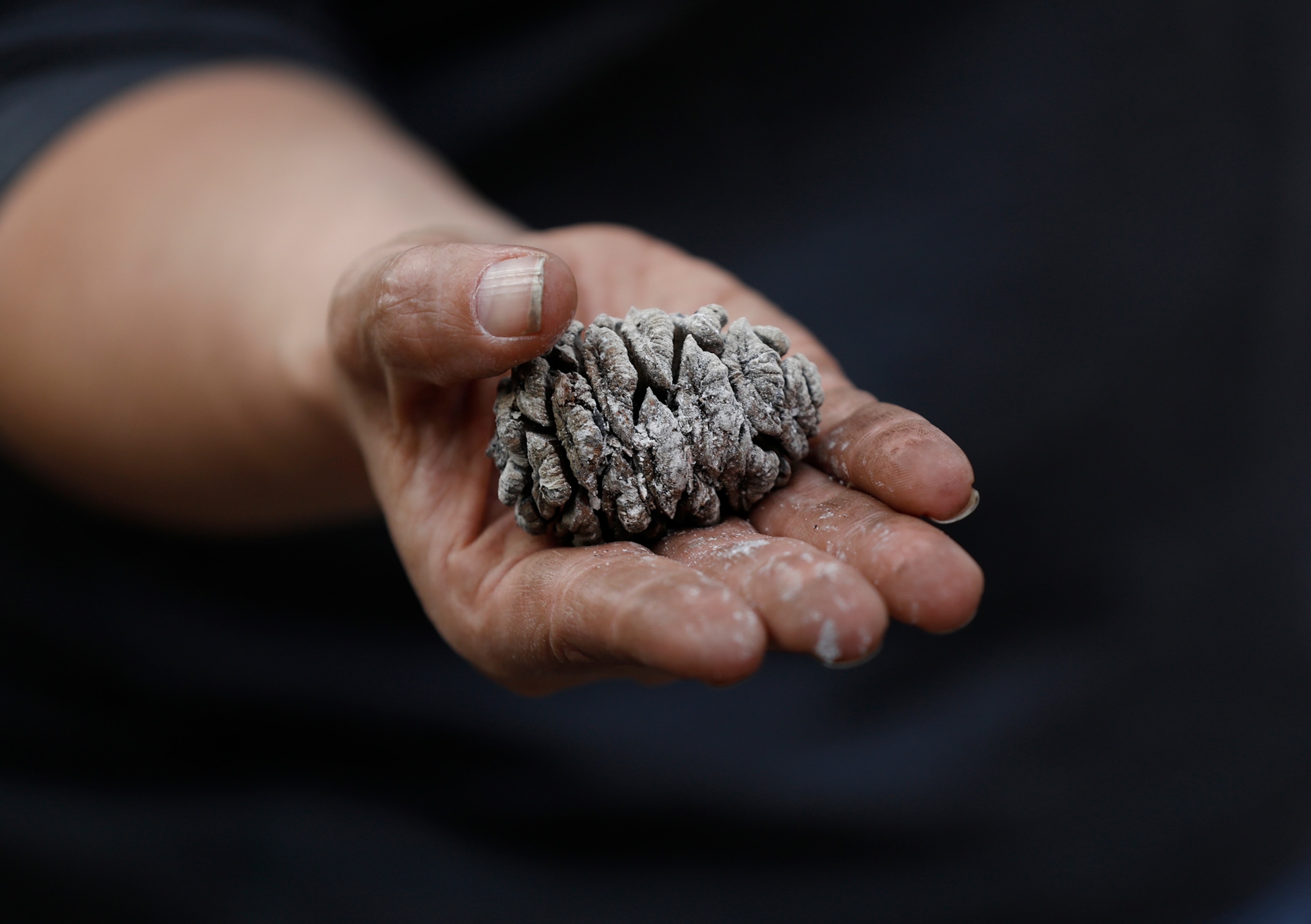
Brigham, Shive, Stephenson, and other scientists would like to see something similar in giant sequoia country. Now, within the Sequoia and Kings Canyon park boundaries, Brigham estimates they prescribe burn a thousand acres each year. That number would ideally be at least 30 times larger, she said.
Sequoias are generally considered more vulnerable than redwoods to the changes humans are throwing at them. The 2012-2016 drought hurt their physiology—for example, making them susceptible to the bark beetle, a pest that had never before troubled them. But in sequoia country too there’s hope that the 2020 burns could drive some of the trees’ tiny seeds—small and papery, like oat flakes—to germinate, rejuvenating groves that didn’t experience the process for decades while fire was excluded.
Will we help them?
The question is: Can they handle more? More heat, more aridity, more fire? They’ve survived such conditions in their evolutionary past—but the changes are coming much faster now than at any point in geologic history.
We don’t yet know how all the complicated effects of climate change will impact them, Stephenson says. The most immediate threat, he and other scientists think, is that climate change will increase the likelihood and intensity of catastrophic wildfires like the ones in 2020, as well as the trees’ vulnerability to them. Stephenson’s research suggests that the combination of the drought, the bark beetle infestation, and fires fueled by drought-killed trees made this season’s burns worse and anticipates more unintended feedback loops to emerge in the future.
Stopping global climate change may take centuries. In the meantime, we can—and must—manage fire risk better, Quinn-Davidson stressed. Tree-ring records show that humans have influenced the fire regime for better and worse as long as they’ve been in these forests.
“The empowering message there is, human management can actually override the effects of climate in a fire contest,” Quinn-Davidson said. “It’s not just a climate story. We can’t just throw in the towel, feel overwhelmed, and tell ourselves these trees are done for. That’s not true!”
For Brigham, too, this year signaled that it’s time to step up our protection of the trees.
“You don’t give up on 2,000-year-old trees because you had a bad season,” she said. “Now, we need to bring our 'A' game. If we do that, we can save a lot of them.”

